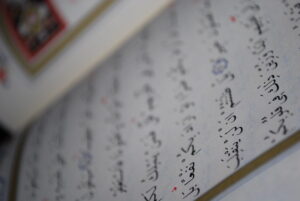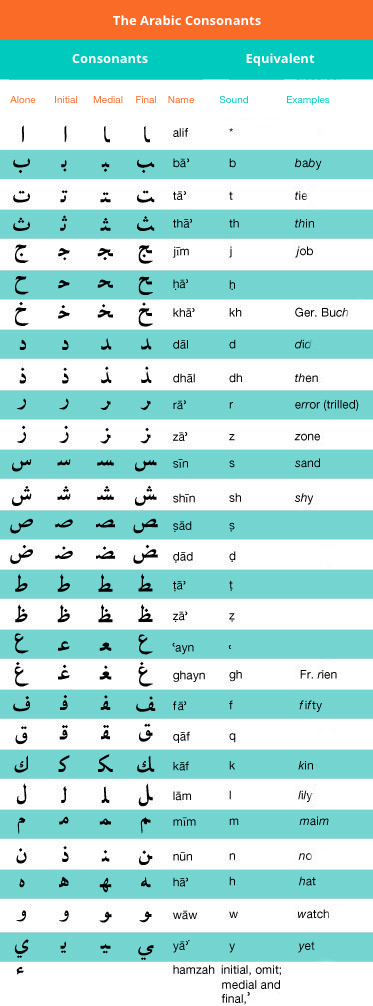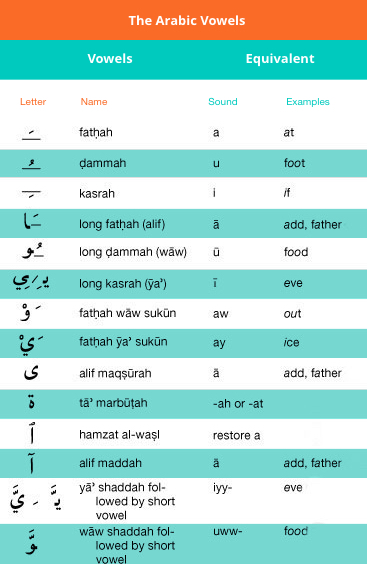Arabic Writing Challenges: Our Guide to Help You Roll With the Punches

Table of Contents
Image via Flickr
Learning Arabic is not for the weak of heart. The Arabic writing system, in particular, with its alien curves and dots, might be a bit scary even for the geekiest language lovers.
And yet, thousands of people take (and pass!) international Arabic proficiency tests every year! It would seem, then, that mastering those strange symbols is not impossible.
A common excuse that people use to talk themselves out of learning Arabic is that it’s not very useful. These people argue that, since not many people speak Arabic, learning its complex alphabet is not worth the effort. But this is not true at all!
Of course, the most widespread writing system in the world is Latin. But did you know that Arabic (and not Chinese or Cyrillic) comes second?
What’s more, Arabic writing is not only used in Arabic. Over the centuries, this writing system spread across much of the Eastern Hemisphere and has since been adapted to other languages such as Persian, Urdu, and Punjabi.
So, if you want to add a valuable skill to your CV, learning the Arabic script is certainly an outstanding option! Let’s take a look at what you need to know.
A Brief History of Arabic Writing First
Before we delve deep into the Arabic writing system, let’s bring you up to speed about how this script originated. Luckily for you, the origins of Arabic writing are somewhat obscure, so we won’t take much of your time talking about distant dates you won’t remember.
It is believed that Arabic script was directly developed from the Nabataean alphabet, but scholars don’t seem to agree on what the earliest example of recognisable Arabic writing is.
For some of them, it’s a royal funerary engraving dating from 329 CE. Others, however, believe that this inscription exhibits some features of Arabic but is essentially Aramaic.
For these scholars, the earliest actual document in Arabic is a manuscript dating from 512 CE: A trilingual inscription in Greek, Syriac and Arabic.
Must-Know Facts About The Arabic Alphabet
The Arabic writing system differs from Latin in two main aspects. First, its 28 letters are all consonants. Second, it’s written from right to left.
A salient feature of Arabic writing is its cursive style, which is well suited for handwritten communications. This means that there is no better way of practising the Arabic alphabet than writing actual letters!
Although people usually cringe in fear at the thought of learning a new alphabet, the good news is that Arabic writing is not half as difficult as, say, Chinese.
Sure, the exact shape of each symbol depends on its placement in a word —initial, middle, and final. And yes, there is a fourth shape for every letter which is used when the symbol appears in isolation. But these shapes are still not as intricate or serpentine as one would think.
So, where have all the vowels gone?
As regards long vowels, the letters ālif, wāw, and yā (which stand for the glottal stop, w, and y, in that order) represent a, u and i. Short vowels, on the other hand, are represented by diacritical marks.
Below, you will find a comprehensive chart with the Arabic alphabet and numerals. We have included the four shapes of all the consonants, all the diacritical marks used to represent short vowels, and approximate English equivalents and pronunciations for every sound in the Arabic alphabet.


Mastering the Arabic Script
We’re not gonna lie. Writing in Arabic is very different from writing in English. The Arabic script has a different orientation, it has letters that take different shapes depending on their position in a word, and (let’s face it) it simply looks… well, foreign.
But you shouldn’t let any of this put you off.
Mastering Arabic writing is much easier than all this information might suggest.
Here are a few tips for writing the Arabic alphabet that might help you learn faster:
- Don’t stop writing after every letter! – Writing Arabic requires a fluid link from one symbol to the next, and that means you have to learn to write smoothly, without lifting your pen.
- Learn to hold the pen more efficiently! – Learning a new alphabet implies learning new writing techniques. If you want to improve the fluidity of your handwriting in Arabic script, hold the pen in your fingertips. You will see how much easier it is to control your lines and curves that way.
- Practise the shape of letters over and over! – As always, practice makes perfect. If you want to achieve perfect handwriting, you will need to put pen to paper and spend a few minutes a day improving the shape of your Arabic symbols. The good news about this part of the learning process is that it’s absolutely technical and doesn’t take any mental effort. In fact, you can do it while you listen to a nice Arabic music Spotify playlist.
Mastering the Arabic alphabet is only the beginning of a fascinating learning process. Whether you’re planning to take up Arabic for pleasure, travel, or business, in the end, what every language student wants is to be able to use the new language for communication.
At Listen & Learn, we work with native Arabic teachers who are fully qualified to help you achieve your goals much faster than you would in traditional courses. With our tailor-made lesson plans, you will find yourself speaking Arabic sooner than you would have ever expected. If you haven’t made up your mind yet, send us a message with all your questions and we’ll make sure you get an immediate answer.




